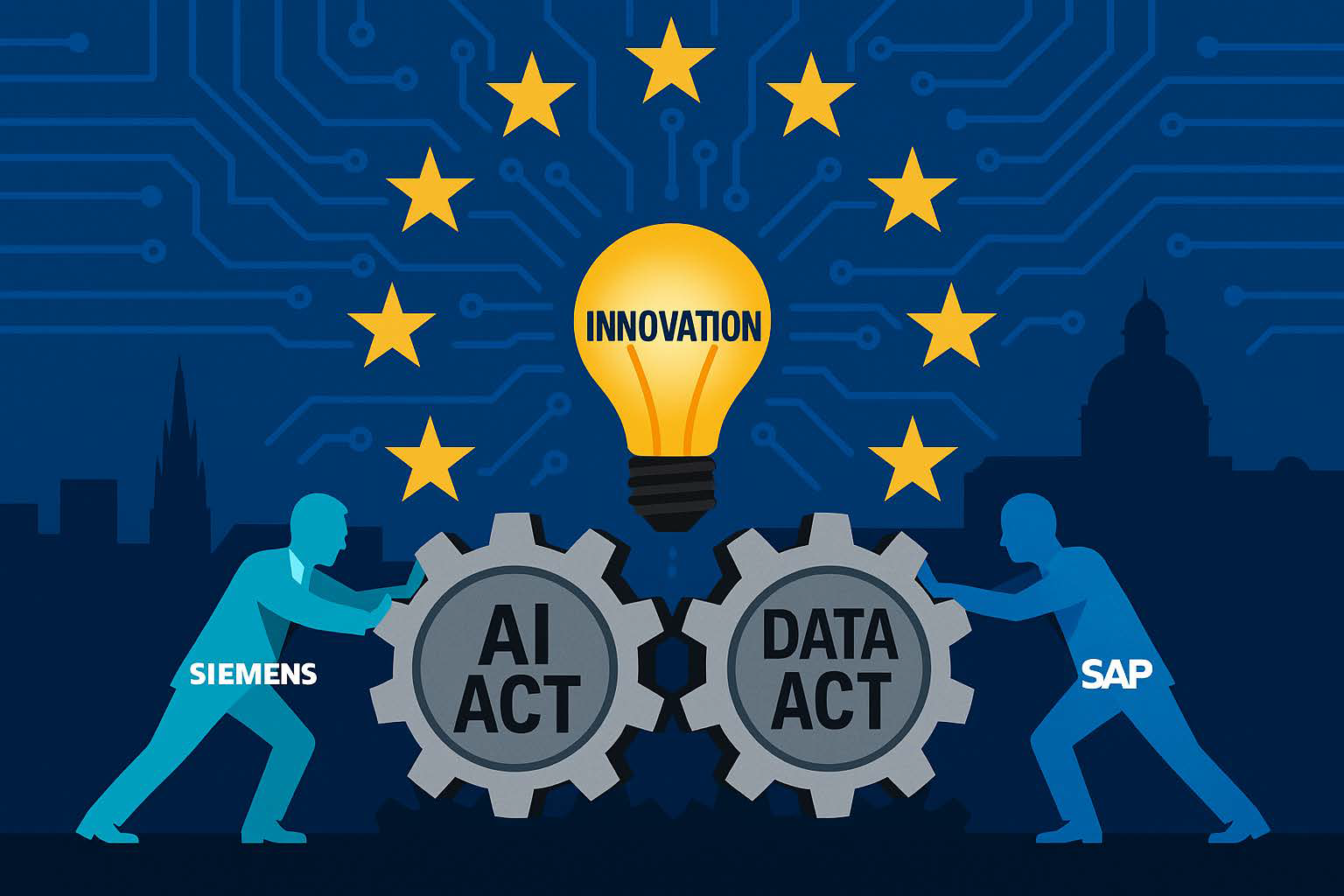EU AI Act: A Limit on Innovation?

July 22, 2025
Two German industrial and technology giants, Siemens and SAP, have voiced serious concerns about the European Union’s forthcoming Artificial Intelligence Act (AI Act). In a joint position paper, they warn that the current draft is overly restrictive and risks slowing innovation, while putting European companies at a disadvantage in global competition.
At the heart of the debate is how the EU defines and regulates “high-risk” artificial-intelligence (AI) systems. Although the Act’s goal is to safeguard fundamental rights and safety, the two firms argue the present approach is too broad, placing strict constraints on general-purpose AI systems that are essential across many industries.
Main concerns: over-regulationand competitive disadvantage
Siemens and SAP contend that the draft fails to draw an adequate distinction between developers of AI systems and the companies that deploy them. In their view, primary responsibility should rest with those who use AI in specific high-risk domains—such as medical diagnostics or control of critical infrastructure—rather than with those who build the underlying technology.
The document, signed by SAP CEO Christian Klein and Siemens President & CEO Roland Busch, stresses that automatically classifying a general-purpose AI system (for example, a large language model) as high-risk would impose a disproportionately heavy burden ondevelopers.
This approach:
· Slows innovation: excessive administrative and compliance duties divert resources from research and development.
· Creates a competitive handicap: European firms would face far stricter conditions than their U.S. and Chinese rivals, reducing their competitiveness.
· Breeds uncertainty: the legal complexity could deter small and medium-sized enterprises from adopting AI technologies.
Proposal: a risk-based,application-focused approach
The two companies offer a clearrecommendation: regulation should target not the base technology itself but itsconcrete use cases. In other words, an AI system’s risk category should dependon the purpose and context in which it is applied.
They note, for example, that anAI-powered spell-checker embedded in a word processor obviously does not carrythe same risks as the control system of a self-driving car, even though bothmay rely on similar core technology.
Where next, Europe?
The position paper forms part ofa broader industry debate in which numerous tech firms and associations are trying to influence the final legislation. Negotiations among the European Parliament, the Commission, and the Council are still under way, and adoption of the final text is yet to come.
Siemens and SAP’s appeal highlights one of the regulation’s toughest dilemmas: how to balance citizen protection with the encouragement of technological progress—without Europe falling behind in the AI revolution. Policymakers must now weigh whether the pursuit of safety will stifle the very innovation that could be key to the continent’s future economic success.
Author:
Sándor Salamon, IT Team Lead
Sources:
Siemens and SAP Demand EU to Revise AI Regulations to Foster Innovation, ET Telecom
Understanding EU AI Act Risk Categories - Security Compass
EU AI Act: Decoding risk levels for AI systems - Intellias
AI Act as a neatly arranged website – Legal Text
Top 10 operational impacts of the EU AI Act – Understanding and assessing risk
